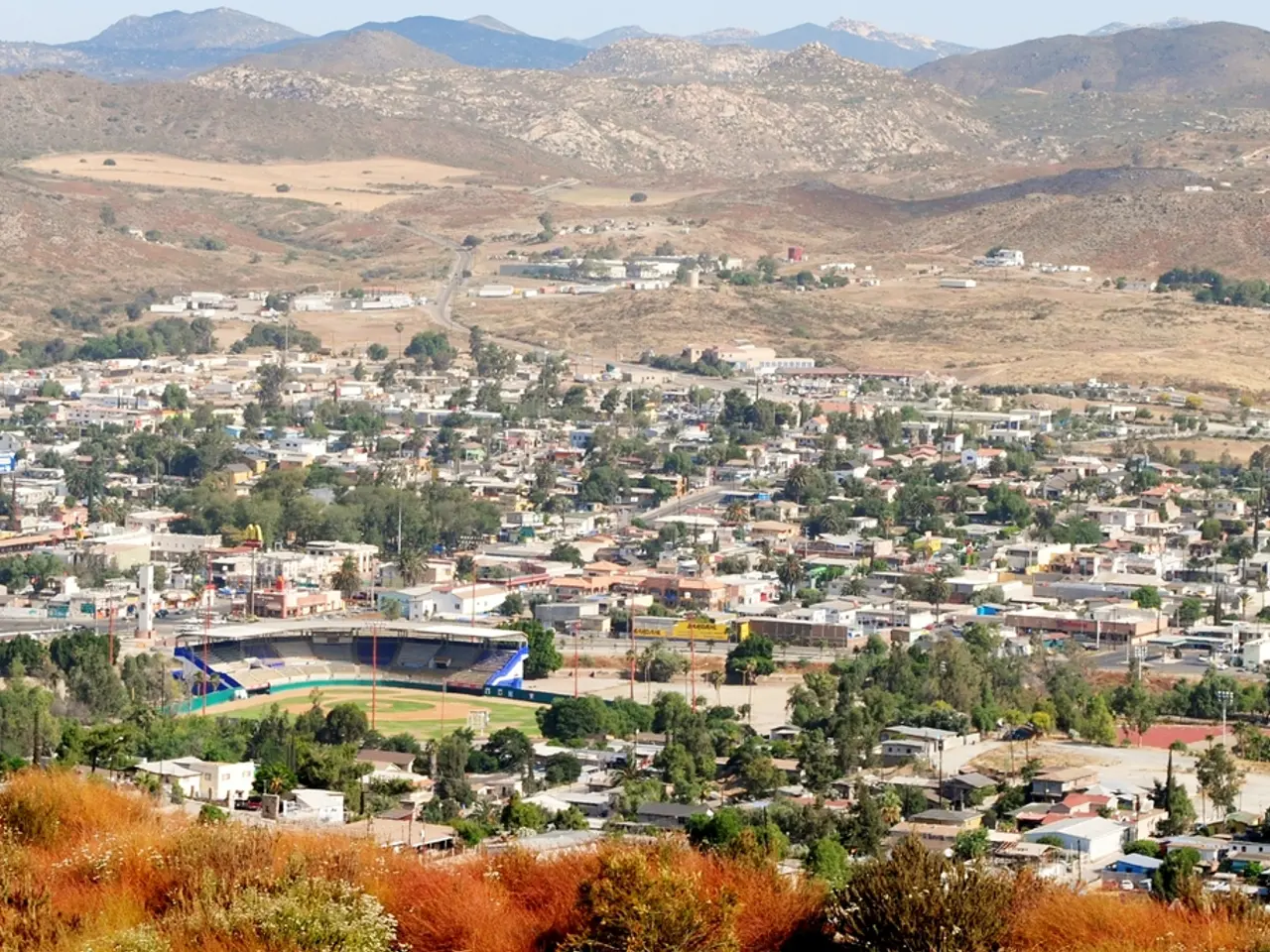Skyward trajectory of property values in regions with significant crime rates - assess your locality's position in the comparison.
Higher Crime Areas See Faster House Price Growth in UK Amidst Affordability Crisis
In the current economic climate, high mortgage rates and the cost-of-living crisis are making sought-after areas increasingly out of reach for many. However, a surprising trend is emerging in the UK property market: areas with higher crime rates are experiencing faster house price growth.
According to Babek Ismayil, founder at OneDome, this trend is primarily driven by affordability factors. People are choosing cheaper housing in higher-crime areas due to the financial pressures they face.
For instance, Woking, a town with an overall crime rate of 32.07, has an average house price of £464,874 and has seen a five-year price change of 15.4%. In comparison, Sutton Coldfield, with a slightly lower crime rate of 26.63, has an average house price of £235,602 and has experienced a more significant price increase of 30.1% over the same period.
This pattern is evident across the UK, with the average house price in the 20 towns and cities with the highest crime rates increasing by 34% over the past five years. This is more than double the 23.2% increase seen in the 20 towns and cities with the lowest crime rates.
Poole, Dorset, the safest place in the country, has an overall crime rate of 26.39 and an average house price of £319,729, with a five-year price change of 15.4%. In contrast, Blackpool, where the crime rate is higher, has seen average house prices rise by 33.8% over the same period.
This relationship contrasts with findings from some other contexts, such as a study in China that found a negative correlation between crime and housing prices. However, in the UK, affordability pressure appears to outweigh crime concerns for many buyers.
This trend is not limited to specific towns and cities. Basingstoke, with an overall crime rate of 34.04, has an average house price of £366,503 and has seen a five-year price change of 20.1%. Harrogate, with an overall crime rate of 28.24, has an average house price of £271,901 and has seen a five-year price change of 23.3%.
In contrast, London, despite some crime rate increases, is showing slower or falling house price growth in recent months, reflecting complex local dynamics. Crime data for London indicate rising reported theft offences but also improvements in reporting, complicating direct correlations with housing market trends.
Despite the potential risks associated with higher crime areas, the short-term gain of moving to less desirable areas with lower house prices can result in long-term gains as equity in homes improves at a faster rate. The high cost-of-living crisis is forcing people to move to towns and cities where they can get that first step on the property ladder.
In summary, in the UK context as of mid-2025, areas with higher crime rates are experiencing higher house price growth primarily due to affordability factors driving demand in those areas despite safety concerns. This trend underscores the need for comprehensive solutions to address the affordability crisis and the broader housing market challenges in the UK.
- The rising house prices in areas with higher crime rates may be linked to personal-finance pressures, as people are choosing these cheaper alternatives in the midst of the cost-of-living crisis.
- In the general-news, it has been reported that the average house price in the UK's 20 highest-crime-rate towns and cities increased by 34% over the past five years, more than double the increase in low-crime areas.
- Investing in real-estate in areas with higher crime rates could potentially provide long-term gains, as the fast equity growth in these houses can offset the immediate safety concerns.
- The trend of faster house price growth in high-crime areas raises questions about the impact of crime and safety on the housing market, particularly in light of the affordability crisis.




